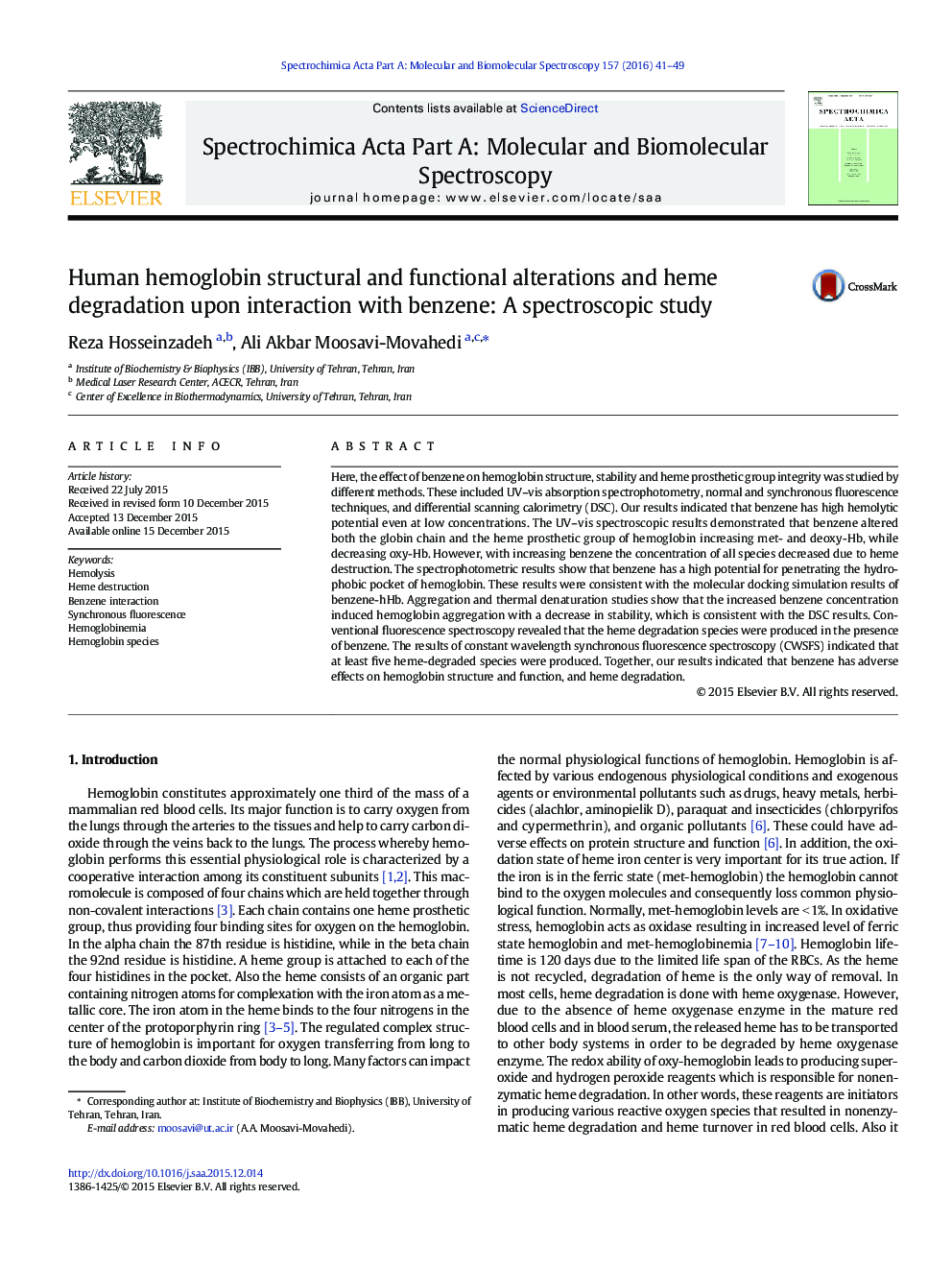| کد مقاله | کد نشریه | سال انتشار | مقاله انگلیسی | نسخه تمام متن |
|---|---|---|---|---|
| 1229314 | 1495212 | 2016 | 9 صفحه PDF | دانلود رایگان |
• The effect of benzene on hemoglobin structure and stability and heme prosthetic group integrity was studied.
• Benzene has high hemolytic potential and altered both the globin and heme of hemoglobin and caused increasing met- and deoxy-Hb and decreasing oxy-Hb also oxygen affinity was decreased strongly.
• Results showed that benzene has a high potential for penetrating the hydrophobic pocket of hemoglobin.
• CWSFS results indicated that at least five heme-degraded species were produced.
Here, the effect of benzene on hemoglobin structure, stability and heme prosthetic group integrity was studied by different methods. These included UV–vis absorption spectrophotometry, normal and synchronous fluorescence techniques, and differential scanning calorimetry (DSC). Our results indicated that benzene has high hemolytic potential even at low concentrations. The UV–vis spectroscopic results demonstrated that benzene altered both the globin chain and the heme prosthetic group of hemoglobin increasing met- and deoxy-Hb, while decreasing oxy-Hb. However, with increasing benzene the concentration of all species decreased due to heme destruction. The spectrophotometric results show that benzene has a high potential for penetrating the hydrophobic pocket of hemoglobin. These results were consistent with the molecular docking simulation results of benzene-hHb. Aggregation and thermal denaturation studies show that the increased benzene concentration induced hemoglobin aggregation with a decrease in stability, which is consistent with the DSC results. Conventional fluorescence spectroscopy revealed that the heme degradation species were produced in the presence of benzene. The results of constant wavelength synchronous fluorescence spectroscopy (CWSFS) indicated that at least five heme-degraded species were produced. Together, our results indicated that benzene has adverse effects on hemoglobin structure and function, and heme degradation.
Figure optionsDownload as PowerPoint slide
Journal: Spectrochimica Acta Part A: Molecular and Biomolecular Spectroscopy - Volume 157, 15 March 2016, Pages 41–49
